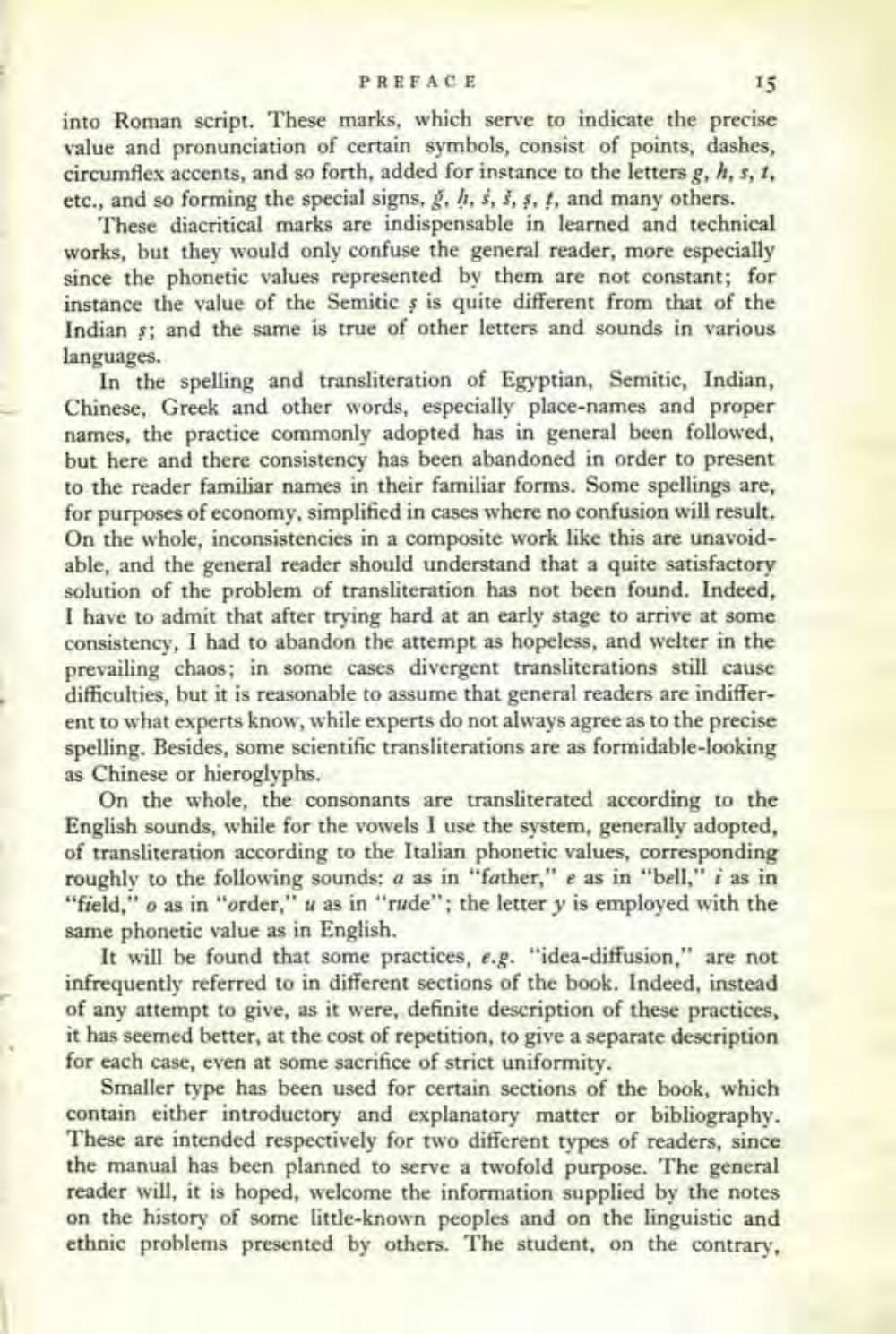________________
PREFACE
15 into Roman script. These marks, which serve to indicate the precise value and pronunciation of certain symbols, consist of points, dashes, circumflex accents, and so forth, added for instance to the letters g, h, s, 1, etc., and so forming the special signs, g, h, 5, 5, s, t, and many others.
These diacritical marks are indispensable in learned and technical works, but they would only confuse the general reader, more especially since the phonetic values represented by them are not constant; for instance the value of the Semitics is quite different from that of the Indians; and the same is true of other letters and sounds in various languages.
In the spelling and transliteration of Egyptian, Semitic, Indian, Chinese, Greek and other words, especially place-names and proper names, the practice commonly adopted has in general been followed, but here and there consistency has been abandoned in order to present to the reader familiar names in their familiar forms. Some spellings are, for purposes of economy, simplified in cases where no confusion will result. On the whole, inconsistencies in a composite work like this are unavoidable, and the general reader should understand that a quite satisfactory solution of the problem of transliteration has not been found. Indeed, I have to admit that after trying hard at an early stage to arrive at some consistency, I had to abandon the attempt as hopeless, and welter in the prevailing chaos; in some cases divergent transliterations still cause difficulties, but it is reasonable to assume that general readers are indifferent to what experts know, while experts do not always agree as to the precise spelling. Besides, some scientific transliterations are as formidable-looking as Chinese or hieroglyphs.
On the whole, the consonants are transliterated according to the English sounds, while for the vowels I use the system, generally adopted, of transliteration according to the Italian phonetic values, corresponding roughly to the following sounds: a as in "father," e as in "bell," i as in "field," o as in "order," u as in "rude"; the letter y is employed with the same phonetic value as in English.
It will be found that some practices, e.g. "idea-diffusion," are not infrequently referred to in different sections of the book. Indeed, instead of any attempt to give, as it were, definite description of these practices, it has seemed better, at the cost of repetition, to give a separate description for each case, even at some sacrifice of strict uniformity.
Smaller type has been used for certain sections of the book, which contain either introductory and explanatory matter or bibliography. These are intended respectively for two different types of readers, since the manual has been planned to serve a twofold purpose. The general reader will, it is hoped, welcome the information supplied by the notes on the history of some little-known peoples and on the linguistic and ethnic problems presented by others. The student, on the contrary,




